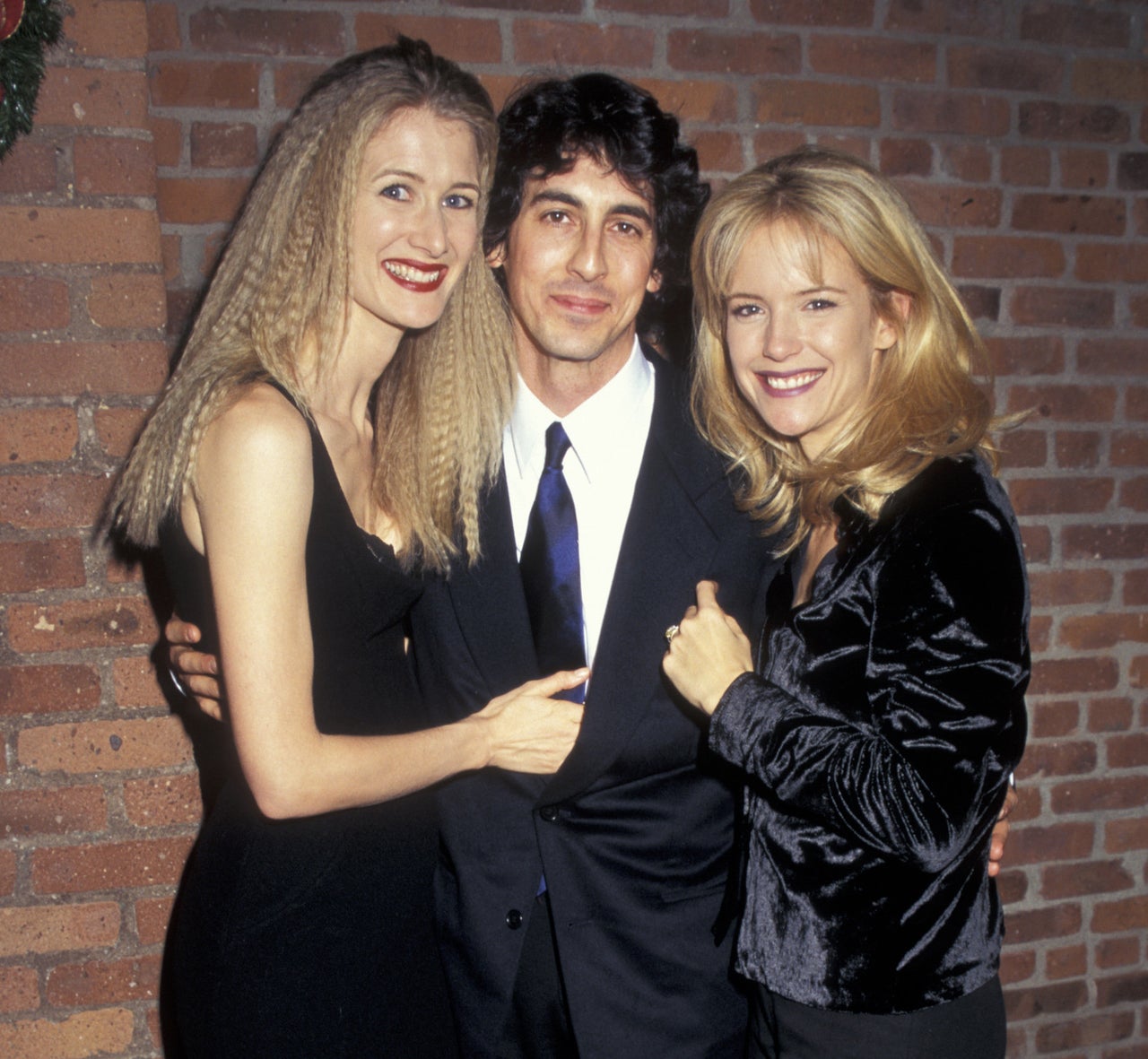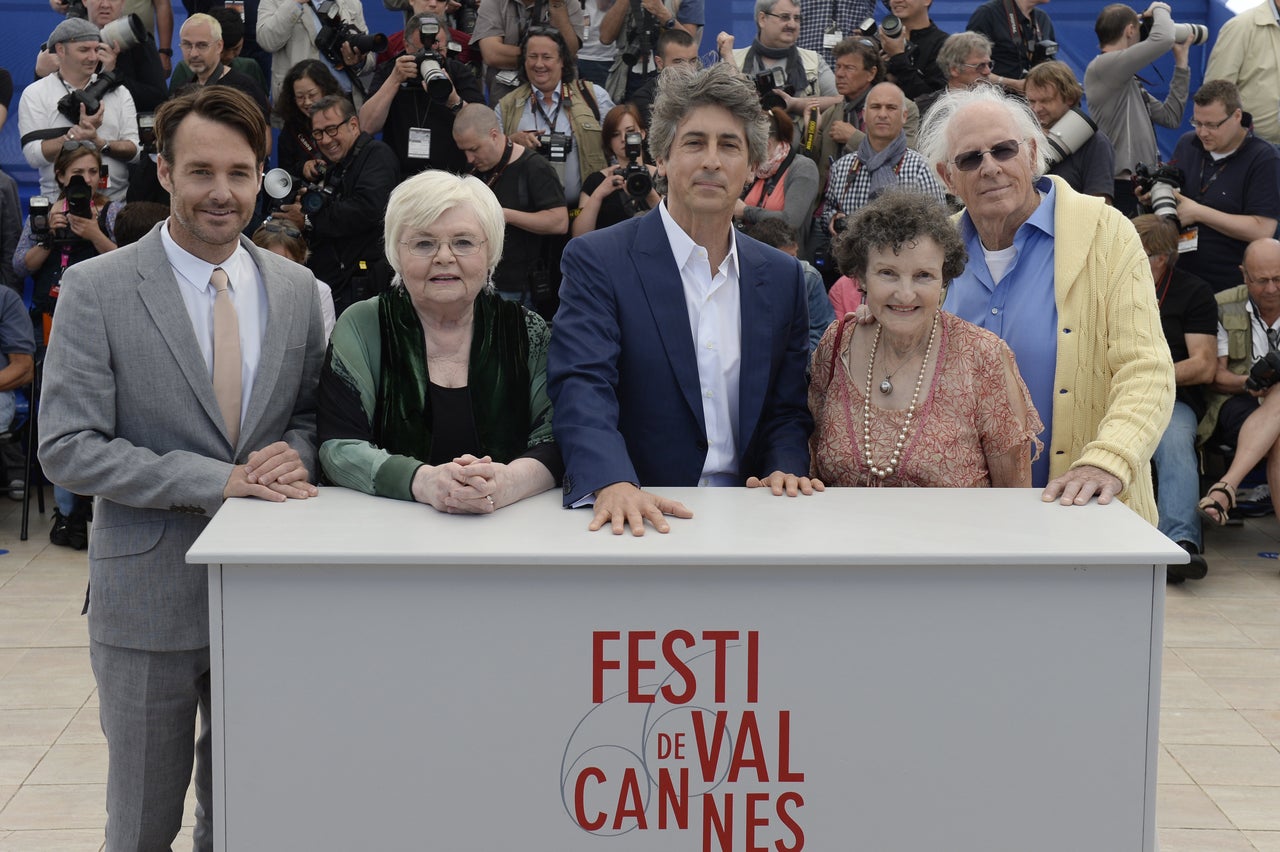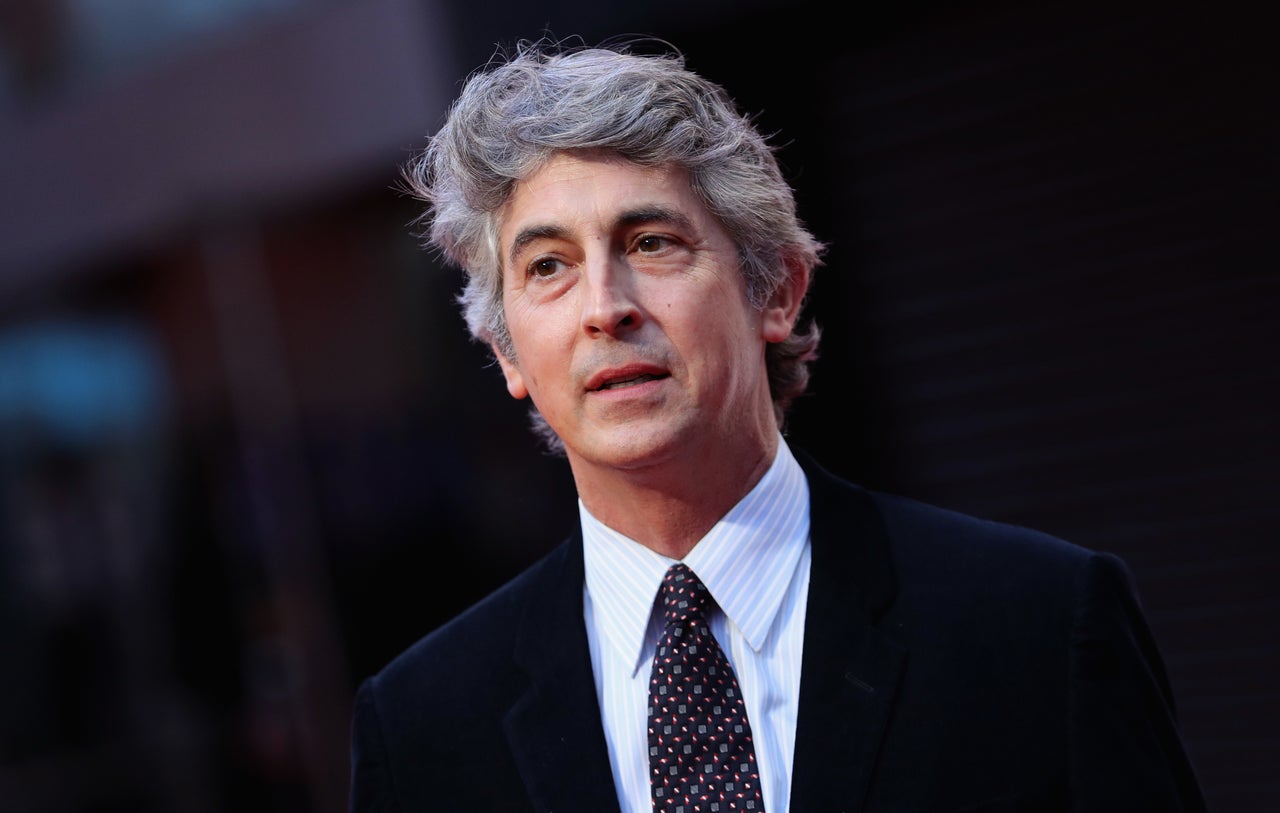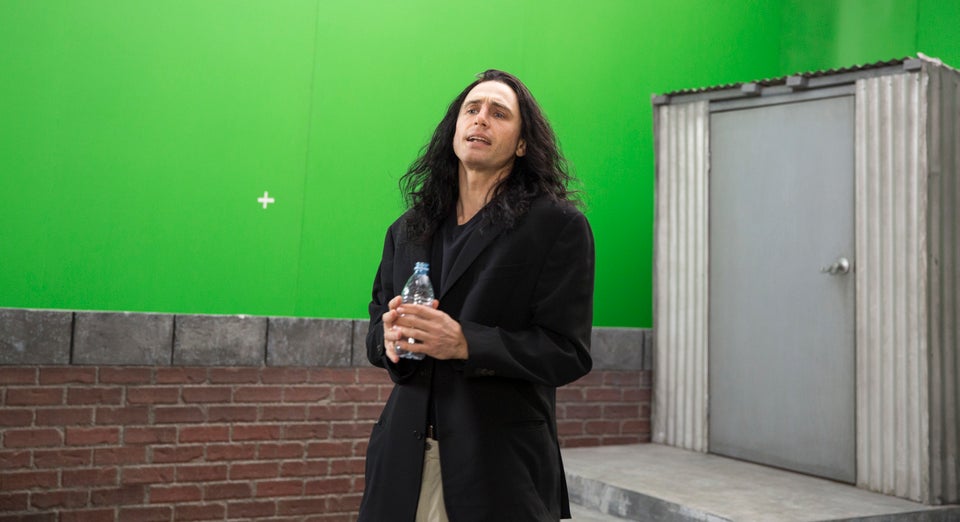Alexander Payne gives melancholy stories a hint of quirk. Each of his movies features a downtrodden protagonist who finds a glimmer of hope in the offing: Laura Dern’s pregnant druggie in “Citizen Ruth,” Reese Witherspoon’s ruthless go-getter in “Election,” Jack Nicholson’s driftless retiree in “About Schmidt,” Paul Giamatti’s defeated wino in “Sideways,” George Clooney’s troubled workaholic in “The Descendants,” Bruce Dern’s stubborn boozehound in “Nebraska” and, now, Matt Damon’s begrudging bachelor in “Downsizing.”
Usually, Payne’s movies stay relatively small in scale, but “Downsizing” is far larger, which is sort of ironic since it’s about people becoming small. Imagine an adult “Honey, I Shrunk the Kids” ― more on that below (spoiler: Payne doesn’t relish the reference) ― pitched as a fable about overpopulation and climate change. Scientists have concocted a procedure that shrinks humans to about five inches tall, after which they move to a miniaturized world. Damon, playing a spiritless office drone, elects to become little. He isn’t very happy with what happens afterward. But, of course, there’s a glimmer of hope somewhere in the distance ― maybe. The plot of “Downsizing” zigs and zags, requiring the most visual effects of Payne’s career, as well as the largest budget ($70 million).
Before Christmas, I sat down with Payne at Paramount Pictures’ New York office, where we talked about casting lead roles, why “Election” is his most popular film and what he gets out of doctoring scripts like “Meet the Parents” and “Jurassic Park III.” In person, Payne is frosty, articulate and wry. He speaks with a screenwriter’s poise, as if his sentences have been scripted. There’s a sardonic edge to the way he comports himself, but, just like his characters, it doesn’t come without a morsel of optimism.
We’ve spoken before, on the phone. I wrote an oral history of “Election” a few years ago.
For whom?
For HuffPost.
Oh, right. That’s you? Whoa! I would have been happy to bring you, as a gift, the new Blu-ray of “Election.” It just came out a couple of days ago.
It’s the Criterion Collection, right?
Criterion, with a bunch of extras. I’m very proud it’s on Criterion.
You said recently that “Election” is still the movie you’re most complimented on, and I started wondering why that is. I don’t know if you’ve read your own Wikipedia page ―
Yeah, a while ago. It’s been a while. I don’t go there often.
One of the bullet points is about the themes of your work, and a big part of that talks about how many men are at the center of the stories you tell. The term “crises of masculinity” is used. Yet your first two movies were about women.
Strong, feisty women.
And then you went in a different direction. What prompted that?
It’s stuff I can look at only in hindsight, I think. But when conceiving a film, I’m just thinking, “What’s good story?” It was just the luck of the draw that “About Schmidt” came my way by way of an adaptation ― I was able to use a screenplay I’d written 10 years before. And then I got the unpublished book of “Sideways,” which was the biggest gift I’d had since getting the unpublished manuscript of “Election.” And then of course we wanted to do “Downsizing,” but that took forever to get made. Then I made “The Descendants.”
I’m not consciously looking for the white male schnook. It’s just, “What’s a good story?” I certainly hate being pigeonholed. “Oh, you’re the chronicler of middle-aged white men.” I guess there’s a certain degree to which ― from Mr. McAllister [in “Election”] to Warren Schmidt to Miles Whatever His Name Is in “Sideways” ― there is this white male in crisis, but it’s kind of the luck of the draw. I mean, my career is a work in progress — just in slight slow motion.

You know, after I wrote the oral history of “Election,” you sent me an email. You wanted me to add an exclamation mark at the end of, “You hear stolen spaghetti-Western music earlier than you do in any Tarantino film. I got there first.”
[Nods and smiles] Well, he told me himself. I ran into Tarantino. One of the first times I met him, he said, “I’ve always wanted to use [composer Ennio] Morricone, but you beat me to it.”
I wonder if you have a theory as to why “Election” is your most popular movie. You’ve had higher-grossing titles than that, and Reese Witherspoon wasn’t as big of a star then as she is now.
I also get a lot of positive comments about “Sideways,” more from a bourgeois crowd — the wine crowd. That’s kind of a minor classic in another way. But I think “Election” has a ferocious cynical bite, which keeps it alive. Not only does it date the film, but it keeps it fresh. And also it’s the only film I’ve made which I feel isn’t too long. It has an extremely good, almost musical rhythm to it. It’s like a shark — it never stops moving forward. As far as high school movies go, it has a real verisimilitude to people’s actual high school experiences, in the casting and the lighting and the feel of the drab school. It has a lot of funny, ribald laughs in it. Pretty good music. And the novelty of multiple voice-over. It has an off-kilter, “Rashomon”-like structure to it.
I have another theory: I think it also has a music-video quality. It’s made during a period in the late ’90s when the aesthetics of MTV were influencing movies. “Go” also came out in 1999, and Baz Luhrmann’s “Romeo & Juliet” was a few years before. “Election” has a bit of that too, with the freeze frames and the surreal visuals.
That had nothing to do with how I shot it. The visual style that most influenced “Election” was “Casino.” I loved the whole film, and particularly the first half. I was drunk with the elixir of the roving camera in “Casino.” “Goodfellas,” too, to a certain degree. But the way he distilled that style in the first half of “Casino” was important.
Your actors have a very good track record with awards. Each movie since “About Schmidt” has earned at least one Oscar nomination for its acting. Here we are on the day of the SAG Award noms, and Hong Chau got a nomination for “Downsizing.” Do you consider yourself especially adept at directing actors?
Well, that’s the most important job of a director in narrative cinema, is it not? To make sure the story is sound and well-told, and that the actors are good. Look, our favorite directors — often the greatest visual stylists — are the ones who are also most adept at getting good performances. Think of Kubrick with Ryan O’Neal. Perfect casting, perhaps the best performance he ever gave. Or those Peter Bogdanovich films, too. But when was John Wayne ever better than with John Ford? Or Toshiro Mifune than with Kurosawa?
It’s up to directors to ensure that the performances are good, and I accept the compliment, and I thank you for the compliment of the question. There’s nothing more richly satisfying than discovering the perfect actor for an idiosyncratic part like this one, so you know the old pros — Matt Damon and Christoph Waltz and Kristen Wiig — will deliver the goods. You know that. But to find, as I say, exactly the right actor for that bizarre part of the one-legged Vietnamese monomaniacal dissident is richly satisfying.
You’re someone who has consistently worked just left of Hollywood. Your movies do make money ―
Not all of them.
Not all of them, but you have some hits on your hands, especially for the types of movies you make.
“The Descendants,” “Sideways” and “About Schmidt” opened pretty well.
There was a big shift during the years between “The Descendants” and “Nebraska” in terms of franchises taking over Hollywood and movie stars’ box-office power declining. Do you think there’s been a big shift in what sort of casting is required for getting a project made?
I don’t really know what to say about that. Are you asking me to observe the industry, or to talk about my own experiences?
Your own experiences within a changing industry.
My experience has not changed. “Downsizing,” just to pluck one example, was very standard trajectory of trying to get a film financed. It’s a sui generis film. The screenplay was called “too intelligent” by a couple of studio chiefs to merit the budget I was asking for, and I knew I needed a big star from a very short list of bankable stars. In his age range, I had only Matt Damon, and thank god he said yes. We also had Reese Witherspoon for a while, but she dropped out and Kristen Wiig took the part. So I did have to build in some insurance policy with stars, which is super old-school.
And then similarly with “Nebraska,” I was able to cast exactly who I thought would be right for the part. No one’s going to run out and see a movie today simply because Bruce Dern and Will Forte are in it; they will know them and respect them, but it’s not a huge insurance policy for the studio. But that movie only cost $13 million — a lot by European standards, not by American studio standards. So I was able to get the film made.
“The Descendants,” George Clooney, great. And then the rest of the financing just fell into place. And he’s right for the part. Even if I didn’t need a star, I feel Clooney was the right guy for that part.

But I’m not sure that George Clooney today is as much of a selling point for a studio as he was in 2010, purely in terms of a movie’s opening-weekend potential.
So you’re saying that film may not be made, or you’re saying I’d have to use a different star?
Probably more the former. Or it would still get made, but it’s less likely to waltz its way to $83 million at the box office. People’s moviegoing habits have changed dramatically over the past seven years.
Taking this discussion to a slightly larger tangent, I lament the disappearance of the adult drama with visual scope. All the quote-unquote adult intelligent films are given shrink-wrapped budgets. I don’t know what “Three Billboards Outside Ebbing, Missouri” cost, or what “Mudbound” cost, but they were as small as possible and they had to be shot in as few days as possible. Where is “The English Patient” today? Where is “Out of Africa” today? Can’t a studio spend $40 to $60 million on something that’s going to have a richly classical-movie feel? That’s what I miss.
A-list movies now are all what used to be Roger Corman films. Rather than what you’re talking about — the change of stars in the last eight years or something — for me the bigger thing is how A-list and B-list have switched. “The Fast and the Furious” used to cost $300,000. Now it costs $200 million. And “Out of Africa” used to cost $50 million, and now you have to make it for $20 million. Anything adult, contemporary, literate is considered an indie, fourth-quarter release. They’re all making Roger Corman films now. “It” is considered an A-list film now.
Do you think that trend will eventually reverse itself again?
No.
You don’t think Marvel will burn out eventually?
I don’t know. That leads to the larger question, as you know — and I’m starting to say the obvious — that American movies are so expensive to make and then so expensive to distribute.
And expensive to get into. For many people, $16 a ticket is a lot to ask.
Look, it’s even $10 or $12 in India. Even in India, where they’re great moviegoers, it’s a little pricey to go. So all of that contributes to lowest-common-denominator, getting-butts-in-seats thinking. Where is the artist? Now, I hear the new “Star Wars” is very good and has artistry within it, but they have the insurance policy. They’re freed within the context. I mean, they needed some artistry after making some stinkers in the series.
With “Downsizing,” the scale is larger than your previous movies, but it doesn’t announce itself as a huge movie.
Your work tends to have a certain quirkiness, and given the premise about shrunken people, I expected more of an adult “Honey, I Shrunk the Kids,” if you will.
I won’t. But I’ve never even seen “Honey, I Shrunk the Kids.”
Have you gotten that reference a lot while doing press?
Oh yeah, but I’ve never seen it.
When you’re devising a parallel world, do you make a list of real-world analogues? Are you thinking, “Well, how does money work? How do neighborhoods work? How is labor divided?”
Not consciously, not schematically like that. It just fell into place naturally when Jim Taylor and I were writing the script. It took a lot of time to write because of all the things we had to imagine, and delightfully so. The movie idea offers an endless chain reaction of what-ifs. What if this? Oh, then what if that? How would they [shrink people]? Oh, they’d have to take fillings out of the teeth. And what would money be? We thought about a lot of that, and of course you can’t get it all into the film because then the film becomes too much about that. You’ve got to have a story to tell.
But the first part of your question was about the visual effects, and of course you have to fill in the production design as well because you build as much as you can afford to, and then do digital extension beyond that. I told both the productions designer and the visual-effects supervisor that I wanted the look of the film to be so real as to be banal. It needed to have the same texture of reality that all of my previous films have had, which are all shot on found locations and unchanged locations as much as possible. I wanted even this highly designed film ultimately to feel like that. And then with the overall visual texture of the film, I wanted it to feel like a movie made in about 1978.
Does this inspire you get even bigger in scale going forward?
It doesn’t matter. Every story’s different. Now I have the experience of doing this one, so I know what all the kids are talking about when they do visual effects and build large sets. This movie required it. My team and I did a pretty fair job, but no movie too big, no movie too small. I’d be delighted to make a $3 million movie next, or a $100 million movie. It really doesn’t matter. In general, though, I grow frustrated by the machinery of American filmmaking. I always wanted intimacy between myself, the camera and what’s being shot.
Among the directors with whom you keep company, do others feel the same way?
I don’t know. I think David Fincher does. I haven’t talked to a lot of directors about it, but I know Fincher’s always thinking about how to have at least less machinery on set. That’s all I know.
I’m surprised by how much script doctoring you’ve done along the way.
Not in a while.
When you were revising “Meet the Parents” and “Jurassic Park III,” was that just because you needed a paycheck?
Hell yes. And it’s fun.
Those aren’t movies that seem like your wheelhouse.
Well, “Meet the Parents” does.

Yeah, I guess you’re right about that. I can see that as an Alexander Payne movie.
We wrote the last draft of “Meet the Parents” uncredited, and we did such a good job, they felt, that they, meaning Universal, came to us with a “Jurassic Park III” rewrite, which doesn’t seem like a movie within our wheelhouse. But they needed help with the characters, not the dinosaurs. And then we did “I Now Pronounce You Chuck and Larry,” we did a draft of “Baby Mama,” and we did something else that was never made. I may be blanking on something else we might have done. But it’s good to get a paycheck, and it’s also good to feel like a professional, rather than a struggling artist in a garret. The Coen brothers do it all the time. It’s nice to feel like, “Oh, we have these skills, and rather than stretching this out over six months, we have four weeks to do this, so let’s burn the midnight oil.” You feel like a professional.
You’re not barking at someone’s door waiting for a yes.
No, not just that — but, “Oh, what are we going to do? Does this feel right? is this good enough for us?” It’s like, no, you’ve just got to keep plowing forward. It gave us some skills to where we then wrote “Sideways’ in about 16 weeks, which was shorter than we’d written “Citizen Ruth” or “Election.” It’s good to go to boot camp once in a while.
It’s funny how many ties you have to “Big Little Lies.”
All my bitches! Four of my bitches be in that show: Reese, Shailene, Laura and now Hong. And I haven’t watched the show yet.
Now you just have to put Nicole Kidman in something one of these days.
Right. I hear she’s very good in it.
It may be the best work she’s done, and that’s saying a lot for Nicole Kidman.
That’s great.
You do have a small company of players you’ve used in multiple movies: Laura Dern, June Squibb, Reese Witherspoon had she kept the “Downsizing” role.
Phil Reeves. He plays the principal in “Election,” and he plays Kristen Wiig’s father in “Downsizing.” I love Phil Reeves. I wish I used this company more. It would be so delightful — like Fellini had Marcello Mastroianni, and Antonioni had Monica Vitti, and John Ford had John Wayne, and so forth — to have an alter ego. I haven’t had that yet.
“Downsizing” is currently in theaters.

